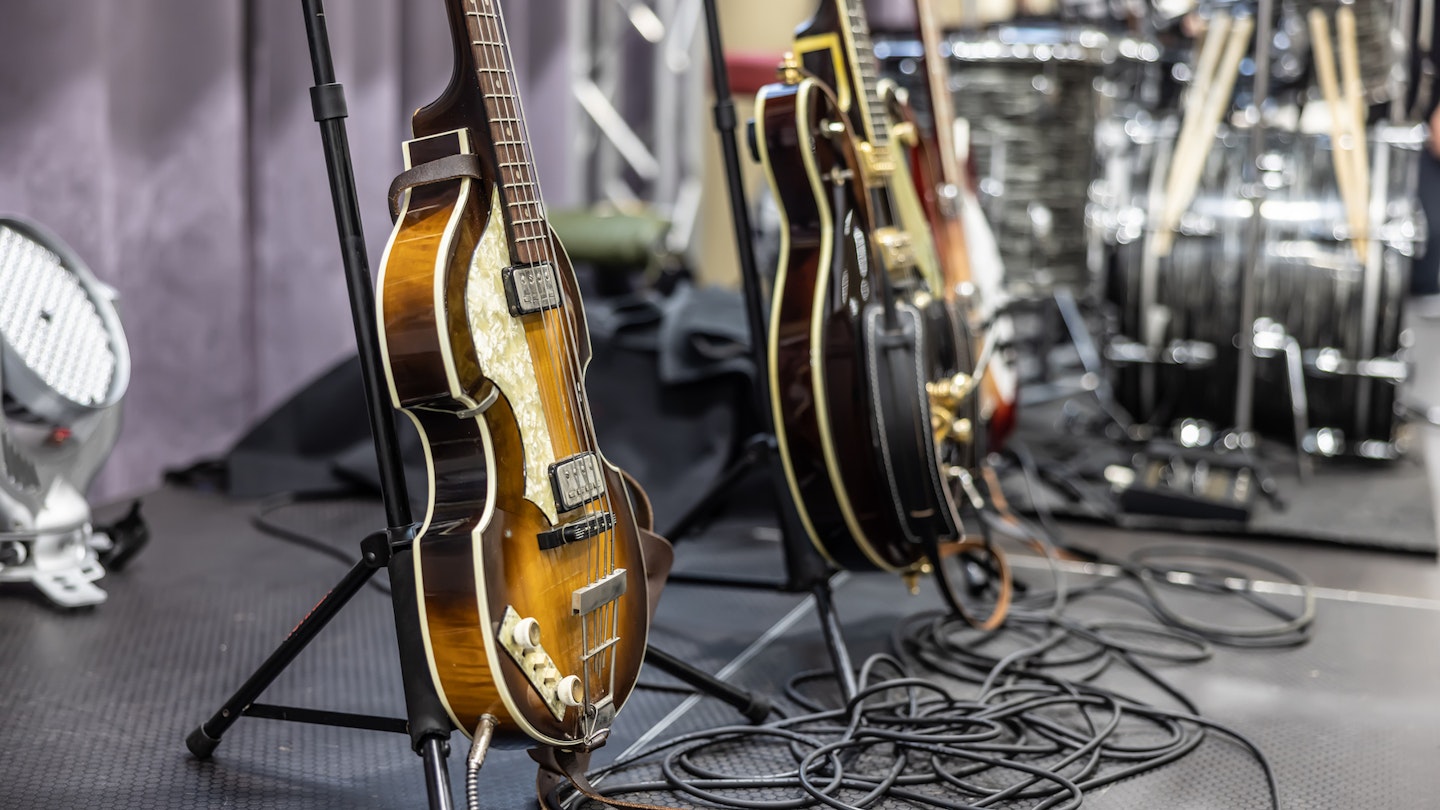Be it the deft melodic runs Paul McCartney played in The Beatles, the showboating funk grooves of Bootsy Collins or the liquid virtuosity of Jaco Pastorius, a good bassline is the heartbeat of a song, the foundation upon which the melodies and rhythms of electric guitars and drum kits can build.
As a bassist, whether you’re drawn to a Precision Bass’s punchy growl or a hollow body’s smooth warmth, the right bass guitar can bring out the best in your playing, unlock new possibilities and inspire you to reach new heights as a musician.
The Best Bass Guitars At A Glance
• Winner: Best Bass Guitar - Fender Player Precision Bass - View on PMT Online
• Runner-up - Epiphone Thunderbird ’60s Bass - View on PMT Online
• Runner-up - Fender Player Jazz Bass - View on Gear4Music
• Best Bass For Beginners - Squier Affinity Jazz Bass - View on Gear4Music
Whether you’re a seasoned bassist or just starting your musical journey, MOJO’s guide to the best bass guitars out there in 2023 provides everything you need to know to find the perfect instrument for you.
The Best Bass Guitars 2023
The best bass guitar 2023 - WINNER
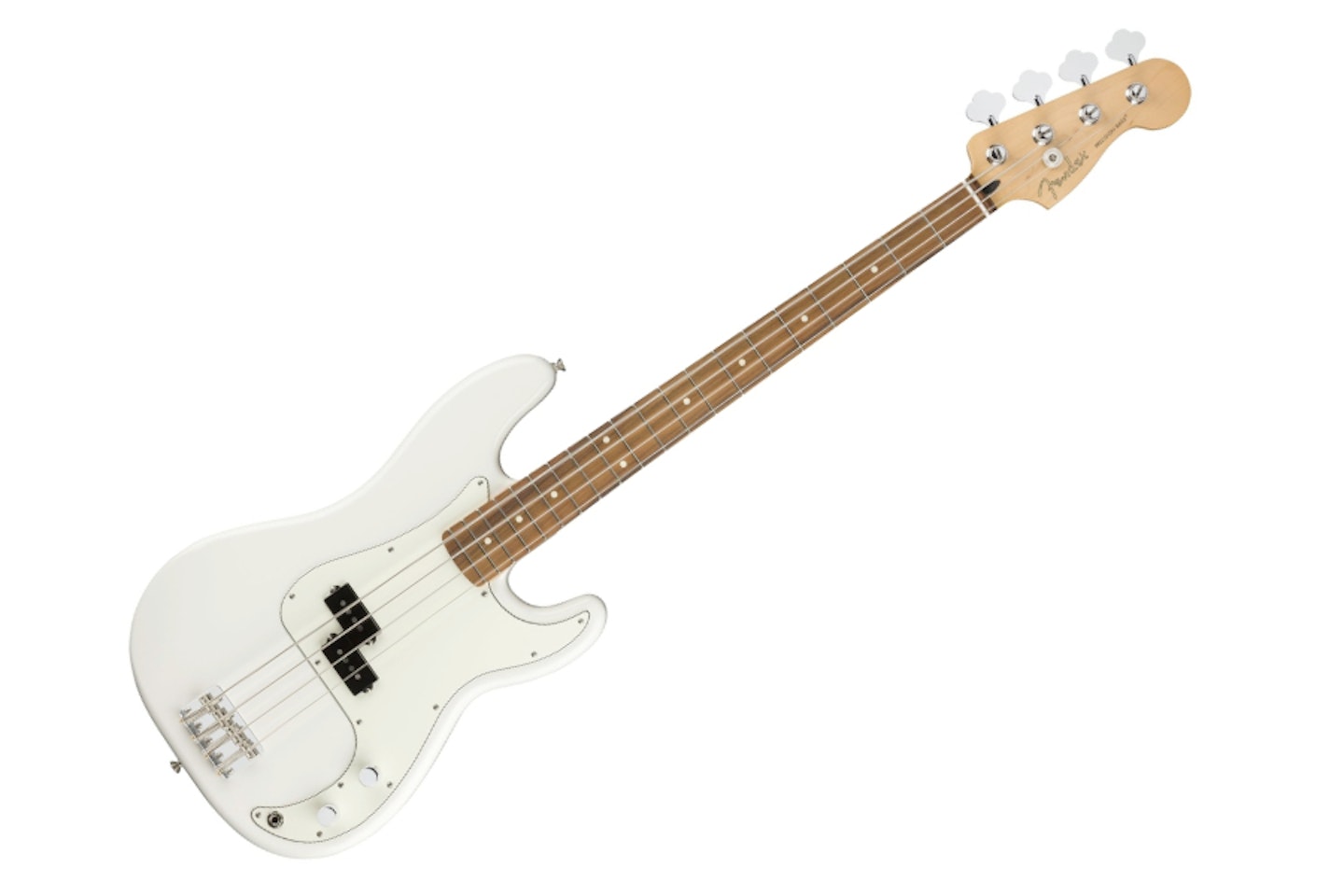
www.pmtonline.co.uk
The Fender Precision Bass was introduced in 1951 and was the first mass-produced electric bass guitar. Prior to then, bulky upright basses were standard for musicians at every level and Leo Fender’s innovation revolutionised the instrument, both in its tonal qualities and in terms of the newfound ease and accessibility for players. Also known as the P-Bass, its distinct sound is characterised by its rich sustain, punchy attack and deep, warm tonal qualities.
The Fender Player Precision Bass is a modern take on the iconic P-Bass design, featuring a comfortable C-shaped maple neck and a solid alder body. It features a powerful split single-coil pickup, a hallmark of the classic P-Bass tone, emphasising the low-end frequencies for a balanced and punchy sound.
In true P-Bass tradition, the Player Precision Bass is incredibly versatile – explaining why it tops our list. It’s going to deliver, whether you are following in the footsteps of legendary Motown bass man James Jamerson, or hunting that aggressive sound of Jean-Jacques Burnel in The Stranglers.
Pros
- Well defined and punchy tone
- Versatile sound that works across genres
Cons
- Better clarity and midrange drive can be found with the Fender Jazz Bass
| Body Material | Alder |
| Neck Material | Maple |
| Neck Profile | "C" Shape |
| Fingerboard Radius | 9.5" |
| Frets | 20, Medium Jumbo |
| Scale Length | 34" |
| Pickup | x2 Player Series Split Single Coil |
| Controls | Master Volume, Master Tone |
The best bass for a powerful low end
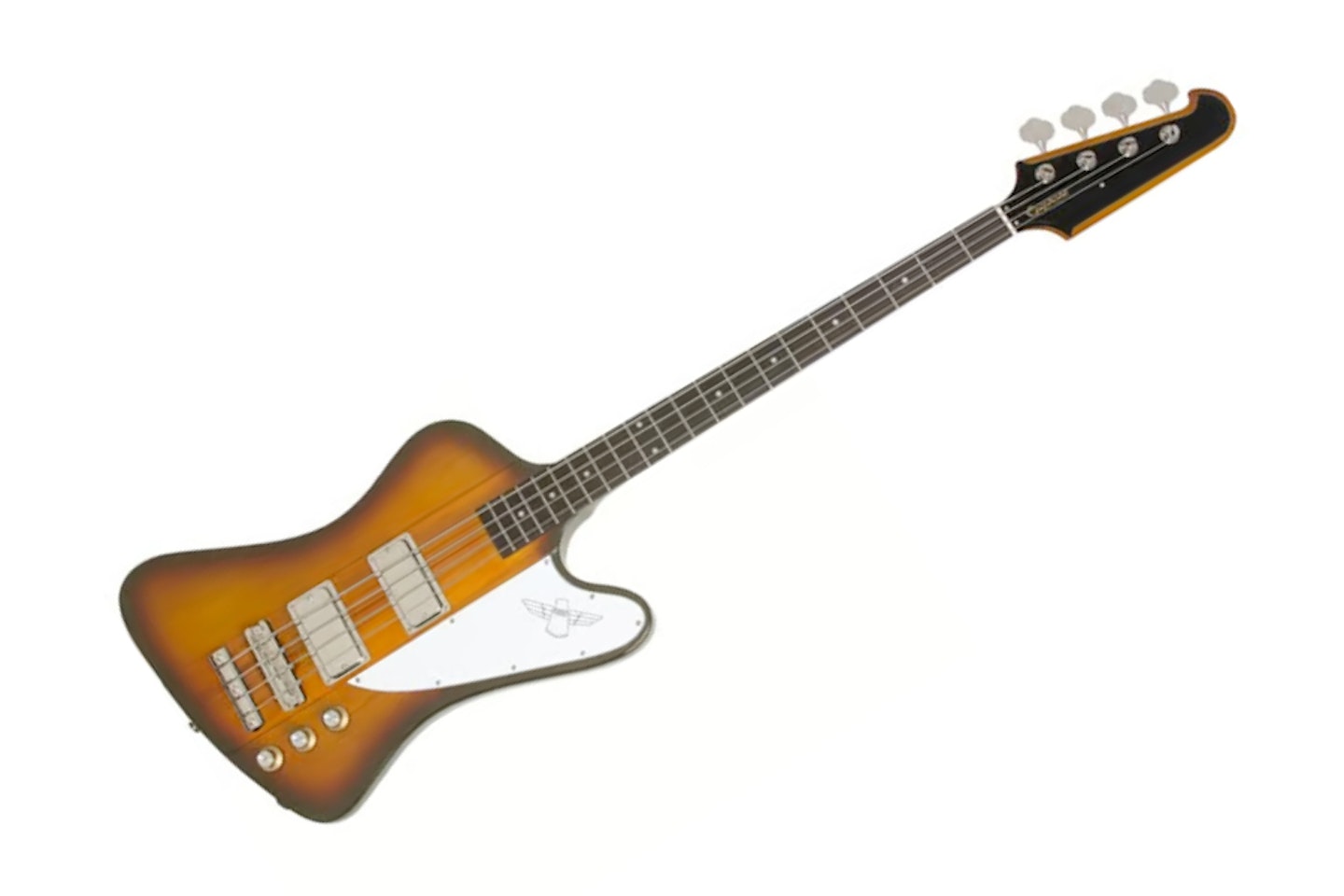
www.pmtonline.co.uk
Seen hanging from the shoulders of influential players including John Entwistle, Pete Way and Krist Novoselic, the Gibson Thunderbird has a well-established place in rock history. Launched in the ’60s, the Thunderbird is known for its dual humbucking pickups, which deliver a thick, punchy sound with a pronounced low-end response. At the same time, its solid mahogany body and neck contribute to its rich, resonant tone and sustain.
Thankfully for anyone thinking of their bank balance, Gibson has allowed the design to fly the nest and land in Epiphone’s more accessibly-priced arms. This Thunderbird ’60s Bass is a modern reissue of the original design, down to its rounded profile neck and dual bass humbuckers. The onboard controls give you power over each pickup’s volume and a master tone, letting you balance the sound and get the most out of this mahogany-bodied beauty.
Not only does it sound fantastic, but it looks great too, with a beautiful tobacco finish and ’60s-styled hardware.
Pros
- Rich, thick tone
- Classic aesthetic
- Affordable
Cons
- Thick tone can’t always cut through the mix
| Body Material | Mahogany Body Wings |
| Neck Material | 7-ply; Mahogany/Walnut Laminate |
| Neck Profile | 1960's Rounded Bass Profile |
| Fingerboard Radius | 12" |
| Frets | 20, Medium Jumbo |
| Scale Length | 34" |
| Pickup | x2 Epiphone ProBucker™ Bass #760 Humbucker |
| Controls | Neck Volume, Bridge Volume, Master Tone |
The best bass for a brighter tone
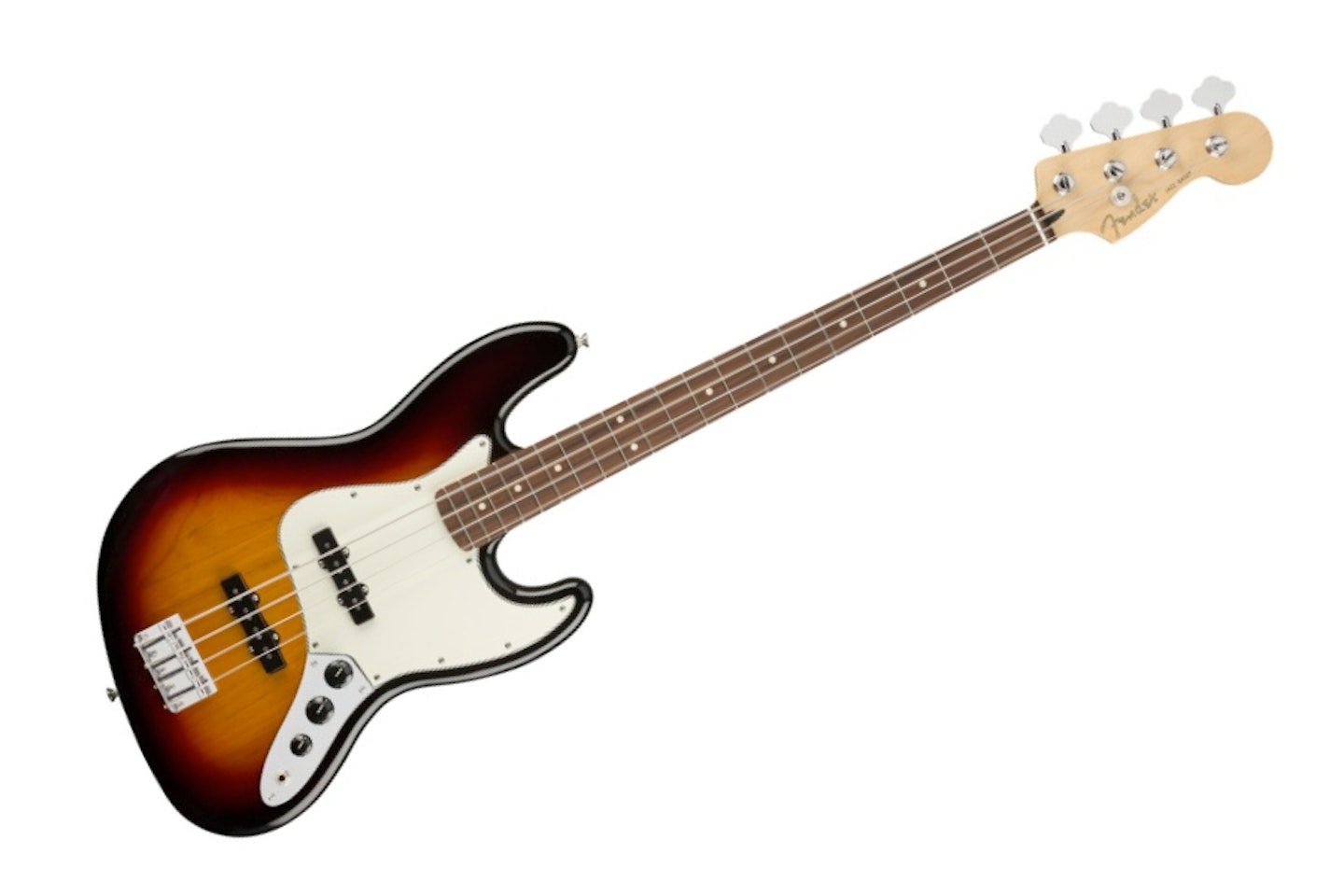
www.gear4music.com
The Fender Jazz Bass is the arty younger brother of the Precision Bass. Landing in 1960, it expanded the tonal possibilities and versatility available to bassists by featuring dual single-coil pickups, giving a brighter and more articulate sound than the P-Bass.
Part of the Player range of guitars, which Fender has introduced to make its iconic models more affordable, the Player Jazz Bass is a contemporary take on the classic J-Bass. With a solid alder body, the guitar is characterised by its clear, focused midrange, growling lows, and pronounced treble presence.
The neck pickup delivers a warm, smooth tone with an excellent low end and rich midrange. The bridge pickup, on the other hand, produces a brighter and punchier tone with enhanced clarity and articulation. Overall, it has a tighter and more focused sound than the P-Bass, making it ideal for cutting through the mix, playing funk-inspired lines, and achieving a more aggressive tone when needed. Picking up this guitar will have you joining a lineage that includes John Paul Jones, Rush’s Geddy Lee and Adam Clayton.
Pros
- Perfect for pushing more midrange basslines
- Versatile tone controls
- Articulate sound
Cons
- Doesn’t punch as hard as the Fender Precision bass
| Body Material | Alder |
| Neck Material | Maple |
| Neck Profile | "C" Shape |
| Fingerboard Radius | 9.5" |
| Frets | 20, Medium Jumbo |
| Scale Length | 34" |
| Pickup | Player Series Single Coil Jazz Bass Neck, Player Series Single Coil Jazz Bass Bridge |
| Controls | Volume 1 (Neck), Volume 2 (Bridge), Master Tone |
The best affordable 5-string bass

www.gear4music.com
As you might expect, a five-string bass provides more versatility for bassists, allowing them to explore lower notes by adding a B string above the low E. This extended range will enable you to create intricate bass lines and experiment with new chord voicings. Players of R&B, jazz, country and metal have readily adopted them, with famous five-stringers including Jack Bruce, Greg Lake and Chris Squire from Yes.
One of the most iconic five-string guitars is the Music Man StingRay. This option bass blends the design and sought-after features of the classic StingRay with the accessibility and affordability of the Sterling line. Now you can experience the distinctive StingRay sound and exceptional playability without needing to re-mortgage.
The heart of the Ray5’s sound lies in its humbucking pickup, designed to capture the distinct StingRay growl and punch. It also features a 2-band preamp, which gives enhanced control over shaping tone - from warm and expressive sounds to a commanding presence that effortlessly cuts through the mix.
Pros
- Extended range at a reasonable price
- Excellent control over shape of tone
- Great playability
Cons
- Five string bass lines are more niche
| Body Material | Basswood |
| Neck Material | Maple |
| Fingerboard Radius | 22, Medium |
| Scale Length | 34" |
| Pickup | H - 1 Ceramic Humbucker |
| Controls | 2-Band Active Preamp |
The best bass for beginners
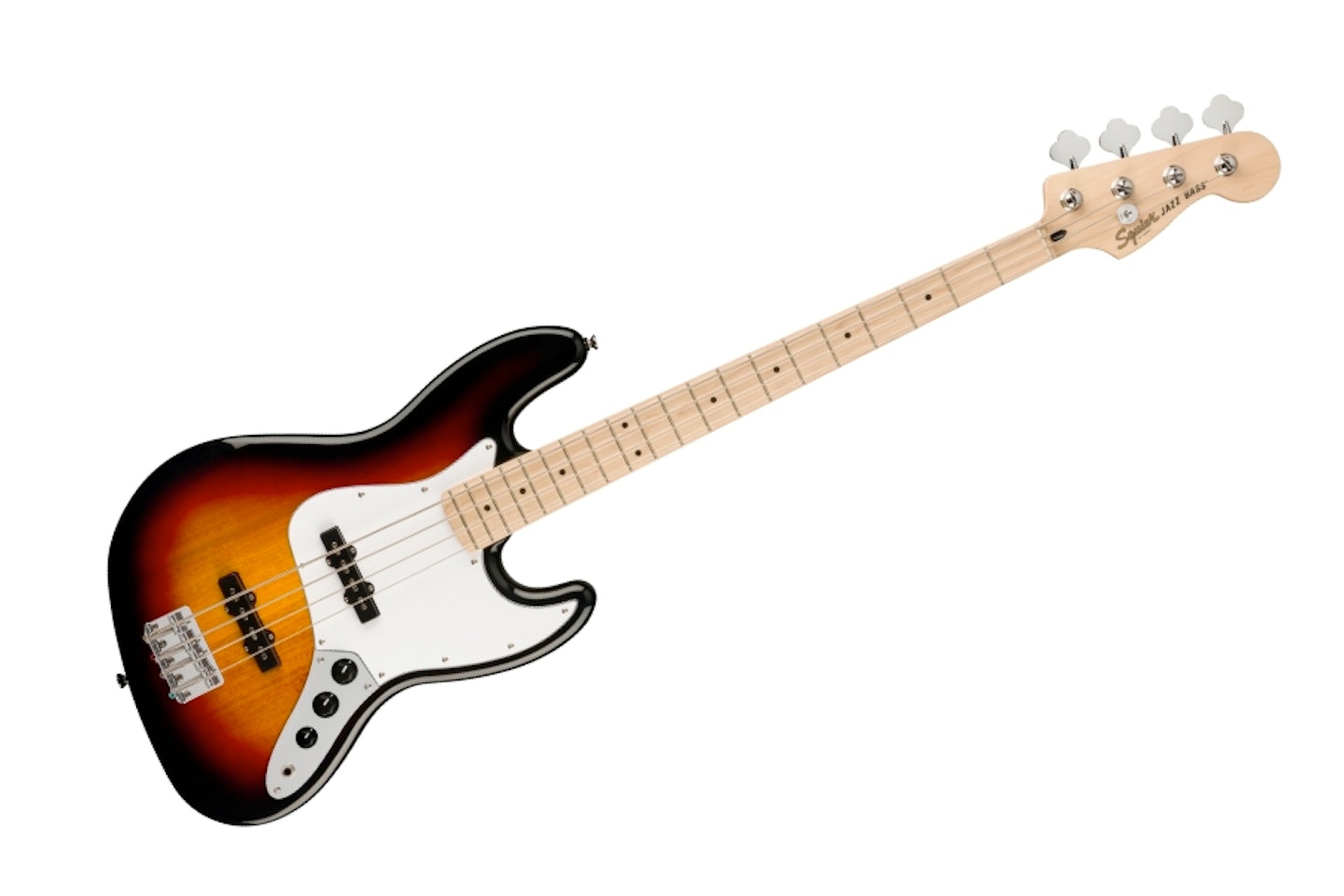
www.gear4music.com
The Squier Affinity Series Jazz Bass is a nice affordable guitar that delivers a wide range of tones and playability without breaking the bank. It has a lovely poplar body – a more affordable wood than alder – which provides a resonant and clear tone. The C-shape neck is a comfortable place to start for newcomers and will make a familiar transition for any guitarists moving over to the rhythm section.
The sound has real versatility, thanks to the bridge and neck single coil pickups, which can blend via the independent volume controls. A tone control is also present, letting you roll back into a deep-rounded tone or up into a brighter register with plenty of attack.
Pros
- Versatile tone controls
- Comfortable neck
- Great sound for price range
Cons
- Could be considered a jack of all trades and master of none
| Body Material | Poplar |
| Neck Material | Maple |
| Neck Profile | "C" Shape |
| Fingerboard Radius | 9.5" |
| Frets | 20, Medium Jumbo |
| Scale Length | 34" |
| Pickup | x2 Ceramic Single-Coil Jazz Bass |
| Controls | Volume 1 (Neck), Volume 2 (Bridge), Master Tone |
The best acoustic bass
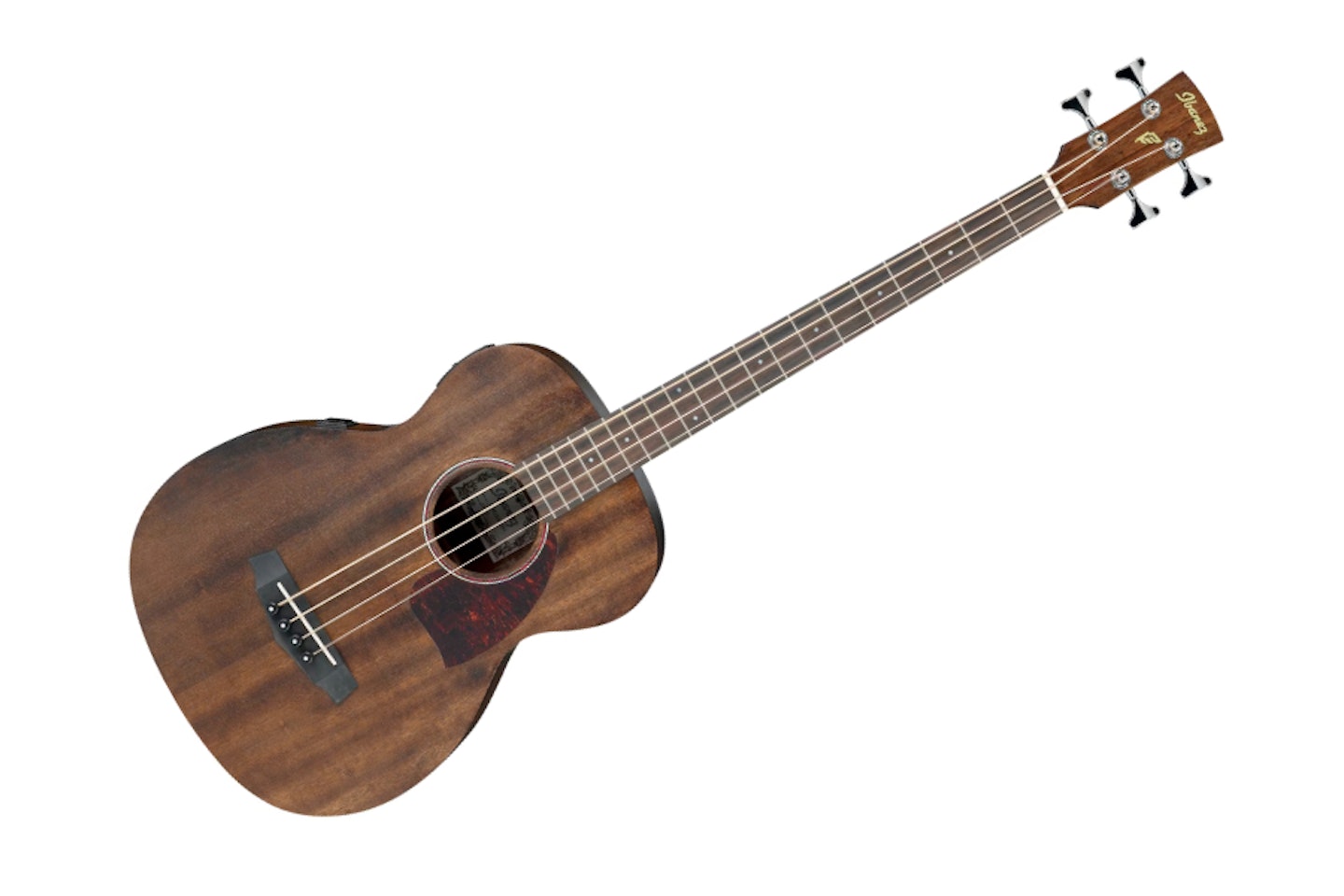
www.pmtonline.co.uk
This Ibanez Acoustic bass is a real gem. It features a grand concert-style body – which is smaller than dreadnought-sized acoustics – and a mahogany top for enhanced resonance. It offers easy playability with a comfortable mahogany neck, rosewood fingerboard, and a shorter scale length.
An affordable addition to any guitar collection, the Ibanez offers a warm and rich acoustic bass sound. Equipped with an Ibanez AEQ-2T preamp system, the bass also includes an onboard tuner and two-band EQ for amplified performances.
Acoustic basses provide a mellower tone than their electric cousins, with a warmer, rounded tone due to the hollow body construction and strong materials. They are well suited to quieter gigs and unplugged sessions and if you’re playing more folky, acoustic-led material (think Crosby, Stills and Nash, Fairport Convention etc). Of course, the acoustic bass also makes a great instrument in unplugged sessions – listen to Nirvana’s MTV Unplugged session to hear what effect the instrument can have.
Pros
- Balanced and rich tone
- Perfect for folk and country
- Built-in pickup
Cons
- Prone to feedback at volume
- Lacks the power of a solid body electric bass
| Body Material | Mahogany |
| Neck Material | Rosewood |
| Frets | 20, Medium Jumbo |
| Scale Length | 32" |
| Pickup | Ibanez undersaddle Pickup |
| Controls | Ibanez AEQ202T Preamp |
The best hollow-body electric bass
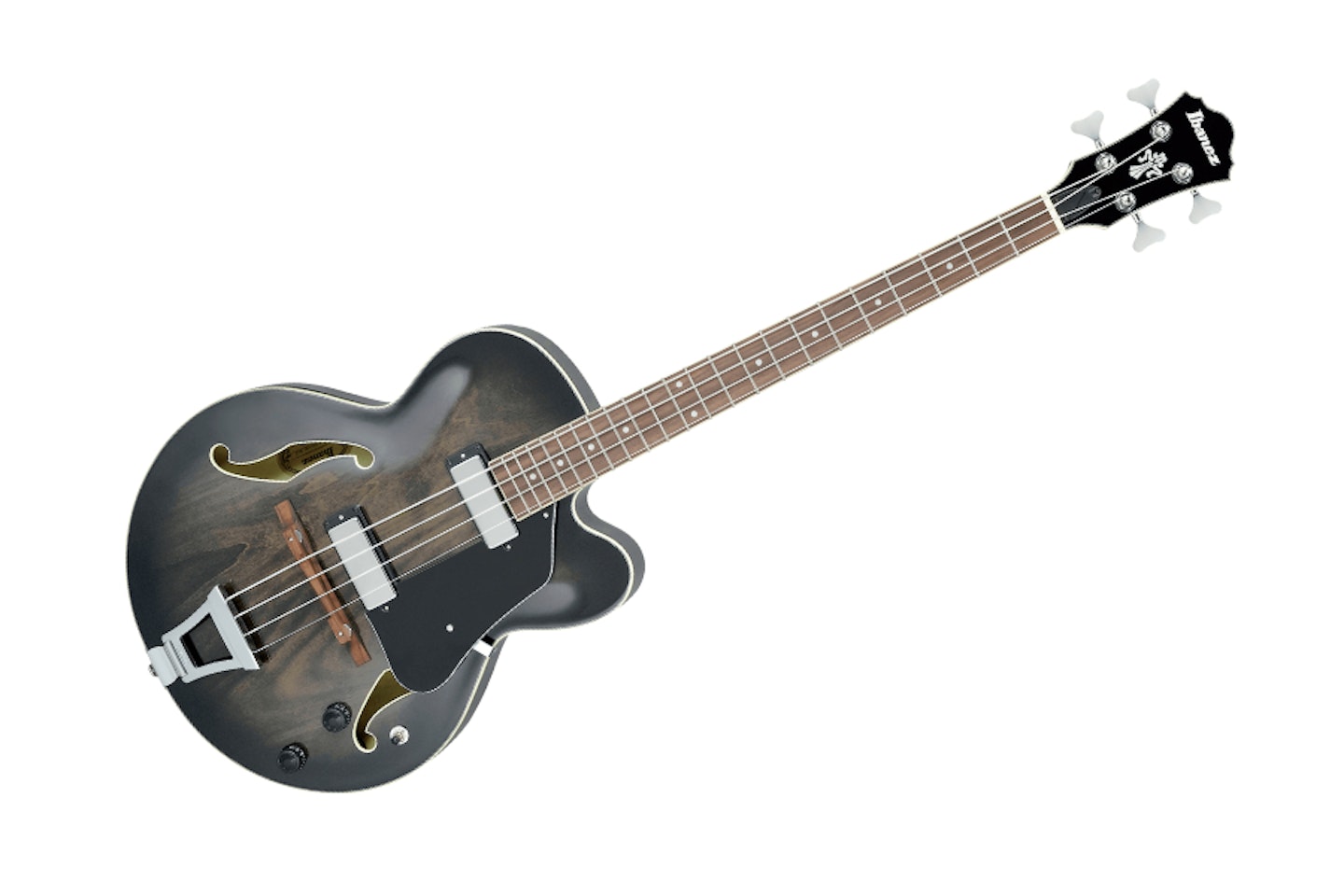
www.pmtonline.co.uk
The Ibanez AFB200 is a fantastic hollow-body electric bass, bridging the gap between the warm, woody timbre of acoustic basses and the powerful punch of solid electrics. Its tone comes from a basswood body, maple neck, walnut fretboard, and vintage-inspired Ibanez Classic Elite humbucking pickups. There’s a three-way pickup selector, and each pickup has individual volume and tone controls, allowing you to shape your desired sound.
Another feather in the cap of the AFB200-TKS is its price. It will have those wanting to channel the spirit of Jefferson Airplane’s Jack Casady or Grateful Dead’s Phil Lesh saving a few hundred when compared to Epiphone’s offerings.
The only thing to be wary of is that all hollow-body electric basses can suffer from feedback when played with loads of effects – if you plan on building out a big effects pedal rig featuring heavy distortion, you should stick with solid-bodies.
Pros
- Organic, woody tone of an acoustic
- Punch and power of an electric
- Excellent variety of tones achievable
Cons
- Prone to feedback
| Body Material | Basswood |
| Neck Material | Maple |
| Frets | 22, medium |
| Scale Length | 30.3" |
| Pickup | Classic Elite Bass neck pickup, Classic Elite Bass bridge pickup |
| Controls | Volume 1 (Neck), Volume 2 (Bridge), Master Tone |
The best vintage-revival bass
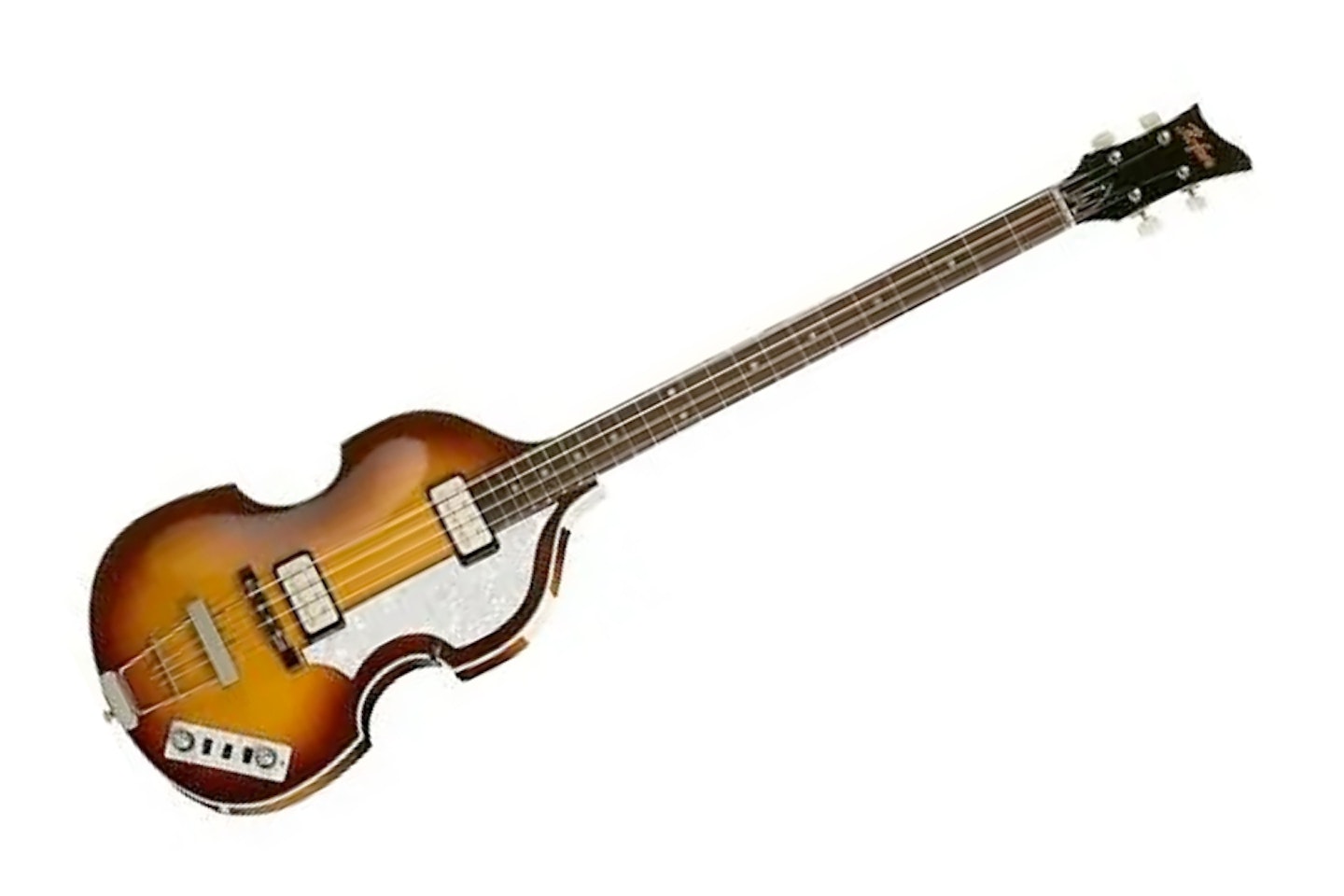
reverb.com
The Hofner Violin Bass is of course synonymous with Paul McCartney and if you don’t fancy shelling out several thousands pounds for a 1960s original, you can now pick up a modern take on its iconic design.
The Hofner HCT-500/1 Violin Bass CT has a hollow-body construction with a spruce top and flamed maple back and sides, helping to deliver a balanced and resonant tone. Pickups are the Hofner Staple humbuckers, which closely resemble the pickups found on the original vintage models. These pickups contribute to its warm, distinct tone.
Like other Violin Bass models, the HCT-500/1 has a shorter scale length, which can provide a comfortable playing experience for those with smaller hands or who prefer the less strenuous experience of the shorter scale, as well as those who enjoy the more pronounced ‘thump’ sound the strings produce.
Hofner Violin basses have become synonymous with a vintage, warm, and woody sound, and the Hofner HCT-500/1 Violin Bass CT gives you a retro aesthetic and a vintage tone with all the robust benefits of a modern build.
Pros
- Pleasing tone and distinct Hofner sound
- Lovingly recreated replica of the classic Hofner 500/1 model
- Shorter scale length for those who like it
Cons
- Shorter scale is not to every player’s taste
| Body Material | Spruce, Maple |
| Neck Material | Maple |
| Frets | 22, Medium Jumbo |
| Scale Length | 30" |
| Pickup | 2x Hofner Staple Nickel |
Bass pickups explored
Single-Coil pickups: Single-coil pickups are the traditional pickup design for bass guitars. They consist of a single coil of wire wrapped around a magnet, typically producing a bright, clear, and articulate tone.
Single-coils tend to have a narrower frequency range and can emphasise the midrange and treble frequencies, which can help the bass push through the mix. They are known for their punchy and twangy sound; they are well-suited to styles that require clarity and attack, such as funk, rock, and reggae.
However, single-coils are susceptible to hum and interference and can lack the low-end depth and warmth found with humbuckers. Humbuckers also tend to have a higher output.
Humbucker pickups: Humbuckers “buck” or cancel out the hum and interference associated with single-coil pickups. They achieve this by using two coils wired in opposite directions, which results in a noise-cancelling effect.
Humbuckers are known for their fat, thick, and powerful tone with enhanced low-end performance and warmth. They offer a broader frequency response and typically have a more substantial output than single coils.
Humbuckers are well-suited for genres like rock, metal, and jazz, where a more robust and full-bodied sound is desirable. Bass humbuckers can be less articulate and defined than single-coils, missing their twang and brightness.
It’s important to note that there are various designs and configurations of single-coil and humbucker pickups, each with their own tonal characteristics. The choice between single-coils and humbuckers depends on personal preference, playing style, and the specific tonal qualities desired for the music played.
Bass guitar woods explained
The choice of wood used in constructing a bass guitar can significantly impact its tone, resonance, and overall character. Here are some commonly used woods in bass guitar construction and their general characteristics:
Alder: Alder is a popular choice for bass bodies due to its balanced tone and excellent resonance. It produces a well-rounded sound with a strong midrange presence and a good amount of clarity. Alder is known for its lightweight nature and chosen for its balanced tonal characteristics that work well across various musical genres.
Ash: Ash is another common wood used for bass bodies. It’s known for its pronounced grain patterns and bright tone. Ash offers a strong attack and tight lows, making it suitable for styles that require a punchy and articulate sound. It can provide a nice blend of warmth and clarity, and its tonal qualities can vary depending on the specific type of ash used.
Maple: Maple is used frequently for bass necks due to its stability and bright tonal characteristics. It produces a snappy and well-defined sound with enhanced sustain. Maple necks can contribute to a more focused and percussive tone, particularly when paired with brighter pickups. Some basses also feature maple fingerboards, which can add further brightness and clarity to the overall sound.
Rosewood: Rosewood is a popular choice for bass fingerboards. It is known for its smooth feel and warm, rich tone. Rosewood imparts a slightly darker and mellower character to the sound, with enhanced sustain and a touch of sweetness. It can add warmth and depth to the overall tonal palette of the bass.
Mahogany: Mahogany is used for bass bodies or necks. It is a dense, resonant wood that offers a warm, full-bodied tone with a strong low-end response. Mahogany contributes to a rich and thick sound with a nice sustain. It’s popular for basses used in rock, blues, and jazz music.
Poplar: Poplar is a lightweight and affordable wood occasionally used for bass guitar bodies. It generally produces a balanced and even tone with moderate resonance.
Combining different woods, construction techniques, and hardware influences a bass guitar’s overall sound and playability. We recommend playing as many variants as possible to find your ideal choice.
Bass guitar necks explained
Bass neck shapes refer to the profile or contour of the back of the bass guitar’s neck. Different neck shapes can have a significant impact on the overall feel and playability of the instrument.
Here’s a list of the most common bass guitar neck shapes. Note that some manufacturers refer to neck shapes using branded names, but often, they can fit into one of these generic categories.
C-shaped Neck: The C-shaped neck is one of the most common and versatile neck profiles. It has a rounded contour with a slight curve, resembling the shape of the letter “C.” This shape provides a comfortable grip and is suitable for various playing styles.
D-shaped Neck: The D-shaped neck resembles the letter "D" and offers a flat back with more pronounced rounded edges. It can provide a comfortable grip, balancing the bulkiness of a U shape with the slimmer feel of a C shape. The flat back is often liked by those who anchor their thumb.
U-shaped Neck: The U-shaped neck has a deeper and more pronounced curve, resulting in a substantial grip. This shape is often associated with vintage basses and can provide a comfortable and solid feel for players who prefer a thicker neck.
Slim or Thin Neck: Some basses feature necks with a small or thin profile. These necks have less mass and a flatter contour, allowing faster and more agile playing. Players who require quick hand movements can find them useful, like those who play intricate bass lines or perform styles like jazz or fusion.
Compound Neck Shape: Some bass guitars feature a compound neck shape, which means that the profile changes along the length of the neck. For example, it may start with a slim profile near the nut for easy playing in lower positions and gradually transition to a thicker profile higher up the neck for better stability and comfort during extended reach.
Plenty of choices exist, so investigate your chosen bass guitar’s construction and play different combinations before making your final pick.
Solid, acoustic and hollow-body bass guitars explored
Solid, acoustic, and hollow-body basses vary in more ways than just their look. Each variant’s construction and tonal characteristics greatly affect whether it’s the right choice for you. Below, we take a quick look at these three bass types.
Solid-body bass: Solid body basses have a solid piece of wood for the body, typically with a cutaway shape, resulting in minimal resonance and feedback resistance. They offer a focused and defined tone with strong sustain. Solid-body basses are known for their versatility, allowing players to achieve a wide range of tones through pickups and electronics. They also offer a focused and defined tone with strong sustain.
They are hugely versatile and heard in all genres, from pop to rock and funk to metal. However, they may lack some of the characteristics and organic resonance found in acoustic and hollow basses.
Acoustic bass: Acoustic basses have a hollow body like acoustic guitars, producing sound naturally without amplification. They usually have a larger body size compared to solid-body basses. Acoustic basses generate a warm and natural tone with a prominent low-end presence and are suitable for unplugged performances and genres like folk, country, and singer-songwriter styles.
Hollow-body bass: Hollow-body electric basses have a fully hollow body, chambered to varying degrees, allowing for acoustic resonance, and increased tonal complexity. They often feature f-holes similar to archtop guitars and produce a rich, complex tone with excellent sustain. They offer a blend of acoustic and electric qualities, making them suitable for jazz, blues, and rockabilly genres.
The advantages of hollow-body basses include their rich and complex tone, acoustic-like resonance, and suitability for various musical genres. Some players will lament, however, that they are prone to feedback at high volumes and when used with distortion effects.
BECOME A MOJO MEMBER today and receive every new issue of MOJO on your smart phone or tablet to listen to or read. Enjoy access to an archive of previous issues, exclusive MOJO Filter emails with the key tracks you need to hear each week, plus a host of member-only rewards and discounts.
